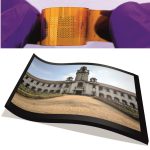
In crystalline electrical insulators, heat is carried by phonons, which are quantised vibrations of the crystal lattice. As these phonons travel through the material, they collide with each other, thereby limiting the material’s thermal conductivity (k). Predicting how frequent and strong these collisions are (“collision rates”) for each material under different experimental conditions is computationally expensive. This can slow down the discovery of new materials, with their k values and trends tailored to our needs.
New research led by Navaneetha Krishnan Ravichandran at the Department of Mechanical Engineering now provides a way to identify materials that show intriguing temperature- and pressure-dependencies of k, without performing these full, expensive computations.
In an earlier publication, Ravichandran and collaborator David Broido at Boston College, USA developed a set of guidelines to identify materialswith unusually weak rates of three-phonon collisions. In the new study, the researchers used these insights to predict an unusual pressure-dependence of the k of a material called boron phosphide (BP) ‒ the material showed a sharp rise in k with pressure, with a peak and subsequent drop, in stark contrast to the linearly increasing trend seen in most other materials.






